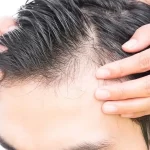Although acne fades away over time, it leaves scars that constantly remind you of the condition. Fortunately, you can go on eliminating the acne scars in Fort Worth with the help of expert dermatologists. But remember that not everyone who develops acne ends up having scars. The condition is unique to everyone. This means you might not experience what you have heard before about the condition, and you need to work closely with your dermatologist to understand your unique needs. Here are some surprising facts about acne to enlighten you about the condition.
Acne Scar Formation is Common
Not all with acne indeed develop scars after the condition is over. However, the chances of developing scars are high, with over 95 percent of those diagnosed with acne having to deal with scarring after the acne is gone. Therefore, it is crucial to consult your dermatologist in advance about the necessary preventative measures you can take to avoid scar formation. Your doctor will work with you through acne lesion healing and help you limit your chances of scar formation. Knowing your risks helps you minimize your chances.
Sunken Acne Scars are More Popular
Many people diagnosed with acne develop sunken scars, known as atrophic scars. This is mainly caused by the inflammatory process that degrades the collagen fibers and the subcutaneous fat beneath your skin. The scars appear like pits or holes in your skin and can significantly impact your confidence and self-esteem. Other common scars include keloids and hypertrophic scars, which are raised with a dark red appearance. The difference is that hypertrophic scars develop within the acne boundary, but keloids can grow beyond the boundaries. However, research indicates that sunken acne scars are more likely to occur than keloids and hypertrophic scars.
Sunken Acne Scars Can Be Subdivided into 3 Subtypes
The most common acne scars can further be classified into three categories: icepick scars, boxcar scars, and rolling scars. The icepick scars are less wide than they are deep, while the boxcar scars are less deep than they are wide. The rolling scars give an undulating or a rolling appearance to your skin. Icepick scars are more common types of sunken acne scars with about 60-70% of all scars, followed by boxcar scars with 20-30 %, and rolling scars from about 15-25% of all scars.
You Need Advanced Treatment for Sunken Scars
While most acne scars can respond to particular topical treatments, not with sunken scars. No single topical treatment can raise the sunken scar after it has lost collagen and is pitted in your skin. You will need to consult a dermatologist for advanced treatments. You might benefit from options like chemical peels, laser treatments, dermal fillers, or dermabrasion procedures. Therefore, save your time by taking the right approach to managing your acne scars.
You Can Prevent Acne Scars
It is not a must for scars to form after healing if you have acne. One of the main ways to avoid acne scar formation is using silicone gel. The treatment has been used for decades and has proven safe and effective in reducing acne scars formation chances. Additionally, products with silicone gel have been found effective in managing keloids and hypertrophic scars.
Acne can be cured to restore your confidence and self-esteem. No matter your acne situation, you can benefit from a dermatologist. Get in touch with the acne specialists at NorthStar Dermatology today for assistance. You can book your appointment online.











